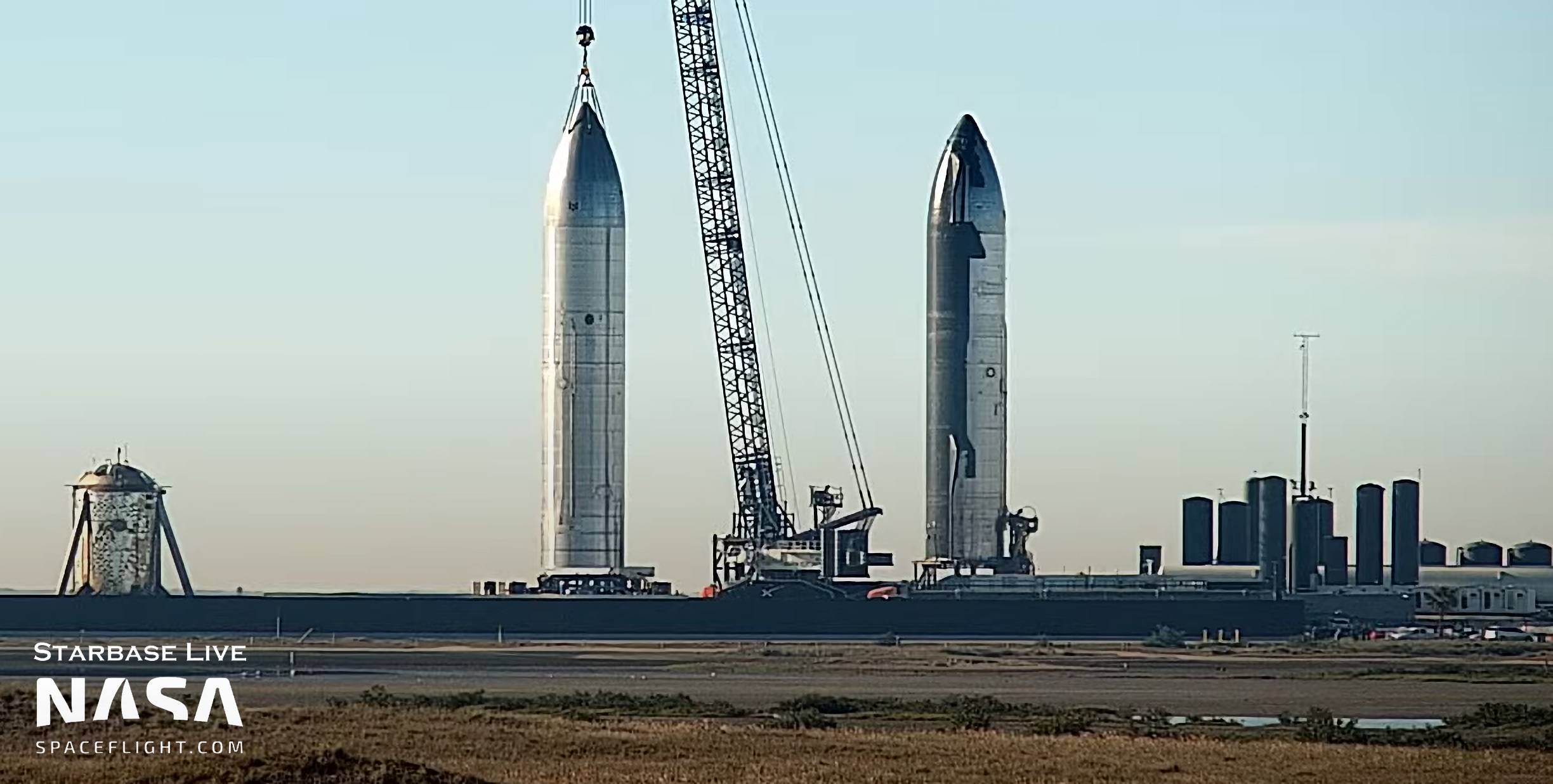SpaceX has rolled a strange, naked Starship prototype from its Starbase, Texas factory to a nearby test site.
Beginning with its cone-tipped nose section, SpaceX started stacking Starship S26 in October 2022. By early January 2023, the prototype had been stacked to its full 50-meter (~165 ft) height and welded together. After about six more weeks of outfitting, Ship 26 left Starbase’s High Bay assembly facility and was transported to one of two stands formerly used for suborbital Starship test flights.
SpaceX lifted Ship 26 onto Suborbital Pad A on the morning of February 12th. Just a few hundred feet to the left, Starship prototype S25 watched from Suborbital Pad B while waiting for the start of its Raptor engine test campaign. Ship 26 is four months younger than Ship 25 and rolled out without Raptors installed, as it still needs to pass several simpler tests. That’s far from the only difference between the Starships.
Starbullet
Aside from a range of smaller design changes, Ship 26 has three main differences relative to most prior Starships. First, it has zero heat shield tiles. Since the 2020-2021 period of suborbital Starship flight testing, all finished ships (S20, S21, S22, S24, S25) have been fitted with ~10,000 black, ceramic heat shield tiles. Eventually, those tiles will (theoretically) protect Starships from the intense heat created by reentering Earth’s atmosphere at orbital velocity.
Ship 26 also has no flaps. Since SpaceX first fully assembled a Starship in October 2020, every ship the company has completed (SN8, SN9, SN10, SN11, SN15, SN16, S20, S21, S22, S24, S25) has had four large flaps and form-fitting ‘aerocovers’ installed. Starships need flaps to steer and orient themselves during orbital reentries. They also need flaps to control themselves during exotic landing maneuvers, which require ships to free-fall belly-down (like a human skydiver) and aggressively flip into a vertical orientation for propulsive landings.

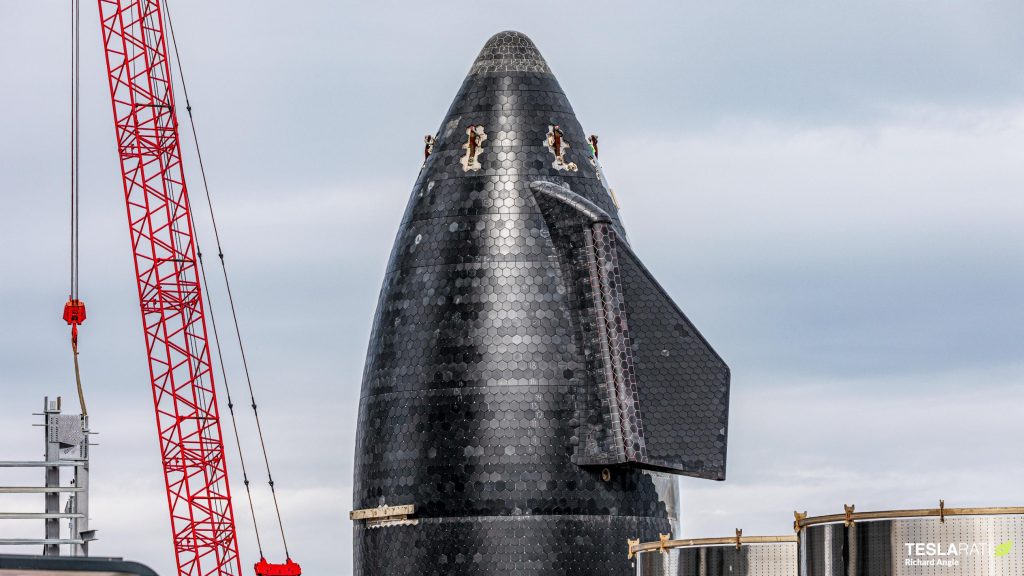
Finally, and most confusingly, Ship 26 has no payload bay of any kind. The end result is a smooth, featureless Starship that looks like a steel bullet, can’t return to Earth, and can’t deploy satellites. Combined, the fact it exists at all almost seems like an elaborate, multi-month mistake. But SpaceX clearly intended to build Ship 26 and is now preparing to qualify it for flight.
Depot, Moon lander, or something else?
In simpler terms, Ship 26 is an intentionally expendable Starship with no way to launch satellites. That raises the obvious question: why does it exist? There are a few obvious possibilities. SpaceX is developing at least four types of Starships. The Crew and Tanker Ships will have heat shields and flaps. The Starship Moon lander will have no flaps or heat shield and will be painted white and insulated. A Depot Ship with stretched tanks will stay in orbit permanently and store propellant for in-space refilling.
Based on low-resolution renders, the bullet-like Depot Ship is the most reminiscent of Ship 26. However, there’s no evidence that Ship 26 has “exterior optical properties [optimized] for long duration [propellant storage].” The prototype also lacks any of the hardware likely needed for docking or propellant transfer and has propellant tanks that are the same size as past ships. To survive in orbit for days or weeks, it would need some kind of power source – typically solar arrays – that isn’t present. And even if an expendable Starship like S26 can already achieve SpaceX’s reported target of 250 tons (~550,000 lb) to low Earth orbit, 250 tons is only a fifth of a full propellant load.
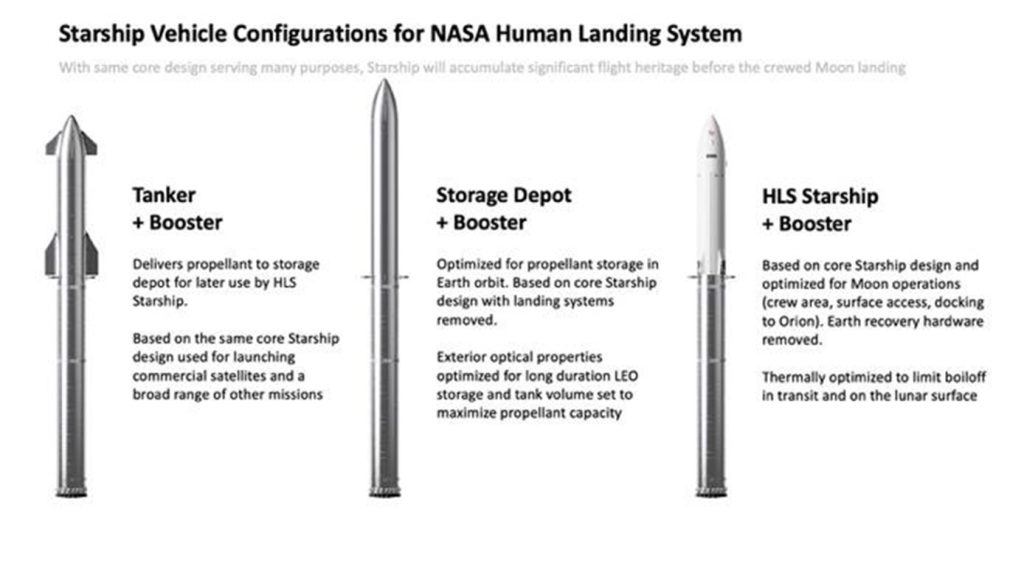
Ship 26 could also be used for miscellaneous systems testing or a longevity demonstration in orbit. However, it’s unclear why SpaceX couldn’t simply do that with Ship 24 and Ship 25. Both have had their payload bays permanently sealed, meaning that they are only useful as test articles. The same is true for a tank-to-tank propellant transfer test SpaceX received a NASA contract to conduct in 2020. During that test, Starship will transfer “10 metric tons” of cryogenic liquid oxygen (LOx) between its main LOx tank and a smaller header LOx tank used to store landing propellant. But all Starships built to date have header tanks and could be used for the same test.
Ship 26 could exist primarily to demonstrate that a Starship with no flaps or heat shield tiles is aerodynamically stable during launch. However, expending an entire Starship for what amounts to wind tunnel testing would be extravagant.
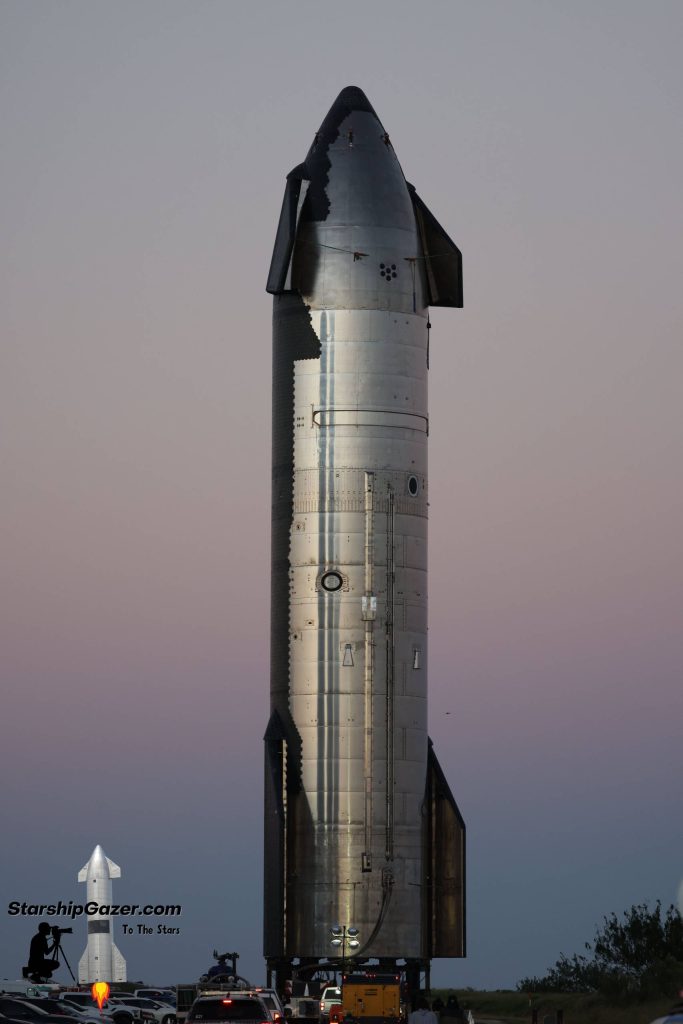
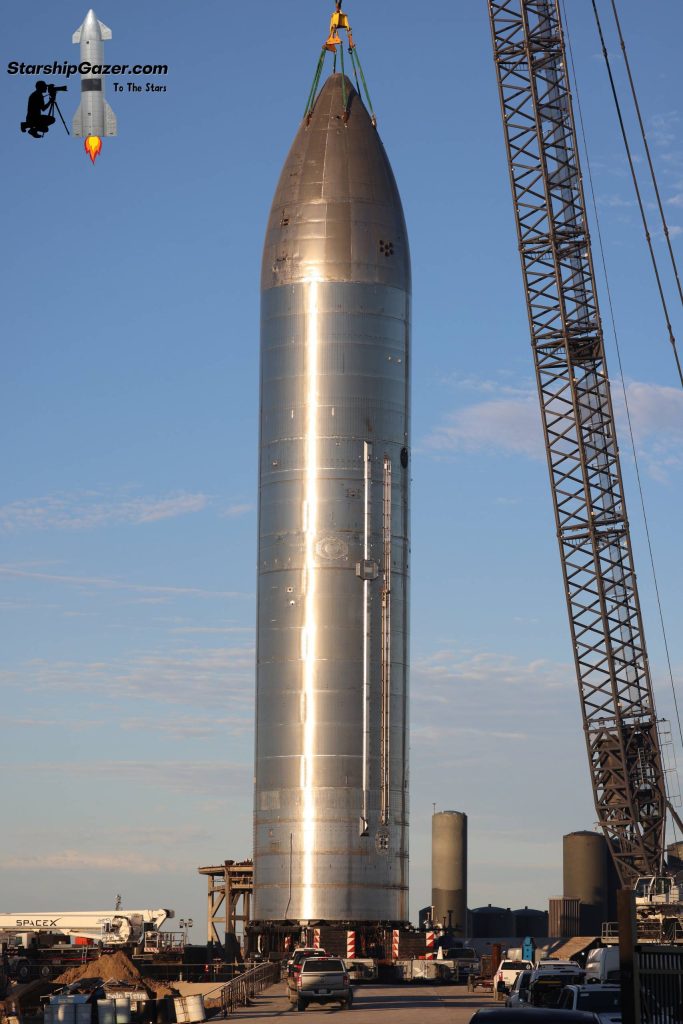
Preparing for flight
Regardless, Ship 26 is clearly destined for more than the scrapyard. The bullet-like prototype was installed on Suborbital Pad A, which SpaceX has modified for cryogenic proofing and structural testing. While coordinating with Ship 25, which needs to conduct static fire tests, Ship 26 will be pressurized and loaded with liquid nitrogen, liquid oxygen, or both to safely simulate the thermal and mechanical loads it will experience when filled with propellant. The stand is fitted with hydraulic rams that can simultaneously simulate the thrust of six Raptor engines (1380 tons / 3M lbf).
If it passes those tests, SpaceX will presumably return Ship 26 to the Starbase factory for Raptor installation. Strangely, the smooth Starship isn’t alone. It appears that Ship 27 will be more or less identical, with no heat shield or flaps. However, there’s evidence that Ship 27 will have the first working payload bay on a Starship and could be used to deploy full-size Starlink V2 satellites in addition to any other testing SpaceX wants to use it for.
The most exotic (and unlikeliest) explanation for Ship 26 and Ship 27 is that the pair is meant to support SpaceX’s first Starship docking and propellant transfer test. In October 2022, a NASA official indicated that SpaceX’s second Starship test flight would be a “Starship-to-Starship propellant transfer.”
For now, SpaceX’s priority is preparing Ship 24 and Super Heavy Booster 7 for Starship’s first orbital launch attempt, followed by preparing Ship 25 and Booster 9 for the second orbital test flight. Until then, Ship 26 and Ship 27 will likely remain a bit of a mystery.

